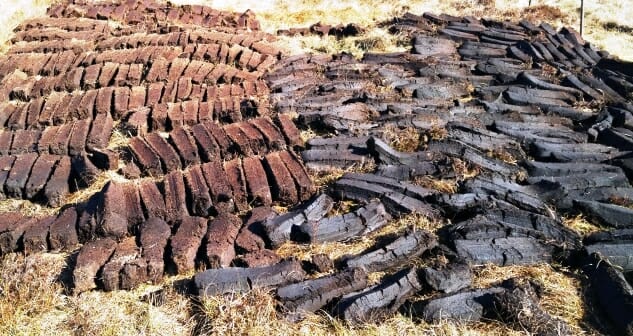
In our new Ask the Expert series, Paste readers chime in with some of their most pressing booze concerns, and we do our best to help you make sense of it all. Resident expert Jake Emen has spent years on the road traveling to distilleries across the country and around the world, and he’s here to help. Want your own question answered? Send a Tweet to him @ManTalkFood using #AskTheExpert.
Mmm. Smoky Scotch. Perfect on a cold, rainy day, or any day for that matter, weather be damned—let’s not limit ourselves. But where does that smoky flavor come from?
Peat.
Wait—what’s peat?
Basically, it’s bog soil, but more accurately, peat is an accumulation of dead organic matter, moss, and decaying vegetation. Now, nobody was sitting around hundreds of years ago saying to themselves, “boy, this dirt would sure make our whiskey taste better!” but it was put to use nevertheless as a fuel.
In order to make Scotch whiskey properly, barley, which is being malted, must be heated to stop the germination process (which itself was initiated to convert starches into sugars—those sugars are then converted to alcohol by yeast during the fermentation process). The most abundant fuel source for starting a fire to complete that task was peat, and as it burned, its signature smoky embrace washed over the barley, imparting those flavors straight into the grains.
Not all Scotch is peated, and not all peat is the same, either. Peat harvested from deeper levels at a single location will include different compounds and burning qualities. Further, peat found in different areas will contain different types of vegetation, and the resulting smoke imparts different flavors. That separates the more heathery peat used by Highland Park on Orkney, for instance, from the more robust peat familiar to Scotch drinkers from so many Islay whiskeys.
Speaking of Islay, there’s no rule that peated whiskey must come from there or that you have to make peated whiskey if it is coming from there, but peat has become a trademark for much of the island’s whiskey.
Port Ellen Maltings is the go-to source for peated malt on Islay. Even distilleries such as Bowmore and Laphroaig who have their own floor maltings still receive the bulk of their supply from Port Ellen. The only currently operational distillery on the island which doesn’t receive at least some of their peated malt from them is Bruichladdich.
Of course, even on Islay, from Lagavulin to Ardbeg, from Caol Ila to Kilchoman, their whiskeys all contain different smoky and peaty flavors. This is the result of how the rest of their production processes differ from each other and interact with that peat and smoke, but also the result of their specific target PPM levels, or “phenol parts per million.”
PPM is essentially a measure of how peaty the malted barley or the resulting whiskey is, with different levels being achieved not from how long the barley is exposed to peat smoke, but rather, from the ratio of peat to barley, and as per the above, the type of peat used for the fire.
The more smoky Scotch you enjoy, the more you’ll be able to distinguish between actual “peat” flavors and pure smoke flavors. Meanwhile, elsewhere in the whiskey world, mesquite, cherry wood, hickory, and a range of other smoke sources are now being used to impart different flavors as well.
Jake Emen is a freelance spirits, food, and travel writer working diligently to explore the world’s finest offerings so he can teach you about them—how selfless of him. He currently resides outside of Washington, D.C. when he’s not on the road. Keep up with his latest adventures at his own site, ManTalkFood.com, or follow him on Twitter @ManTalkFood.
